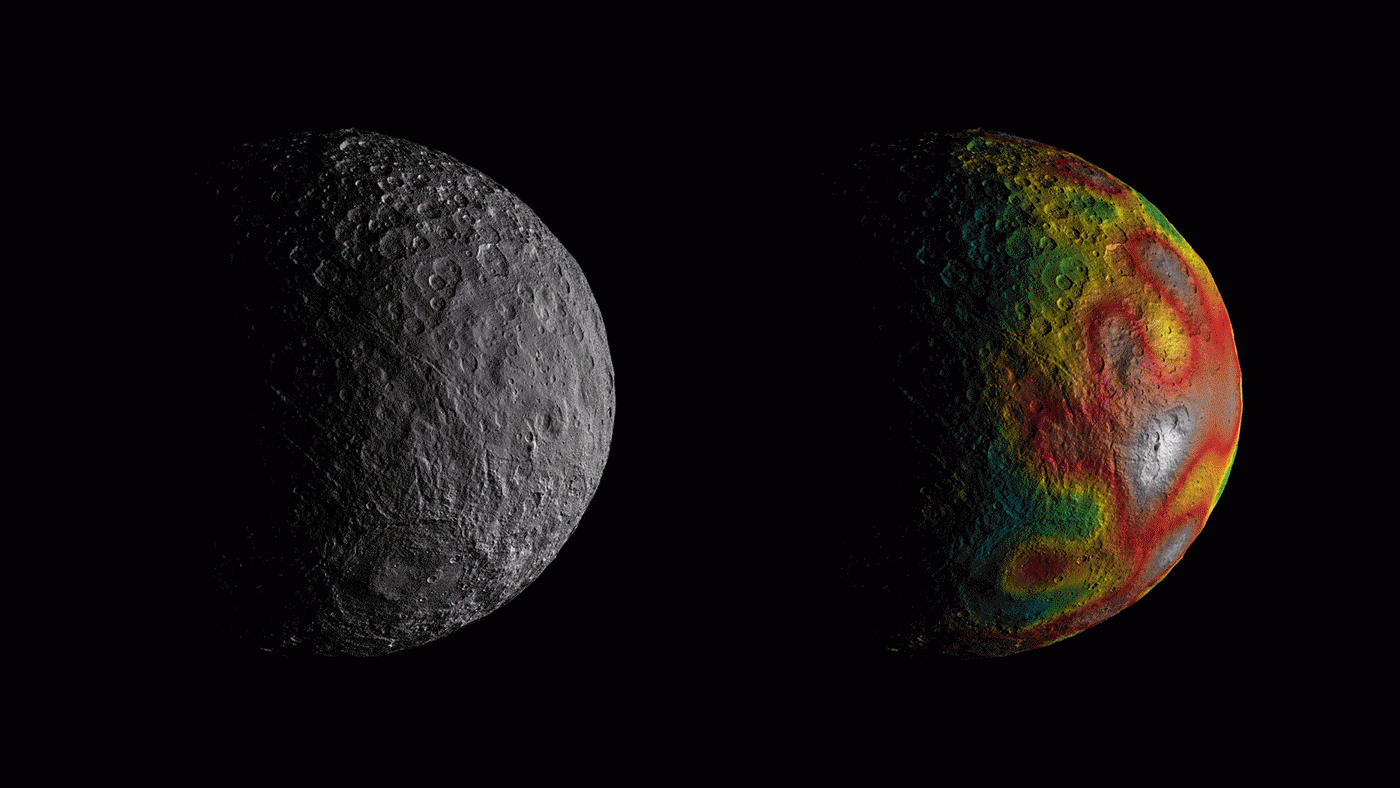Nasa might have found traces of ancient oceans on dwarf planet Ceres
Remnants of 4-billion year-old global ocean could still have liquid water deep below its frozen crust.

Nasa's Dawn mission might have stumbled upon what they are calling remnants of ancient oceans on the surface of Ceres – a dwarf planet that is also the largest object in the asteroid belt.
A report by Nasa noted that the presence of minerals- rich water is well-known, leading to speculation that there might have been large oceans on the dwarf planet. Nasa might have just stumbled upon answers to questions surrounding what became of the "global oceans", and whether or not there is still liquid water on the rock.
Researchers believe that Ceres' ancient oceans have frozen and solidified at the crust, staying that way for over four billion years, but there are signs that there might be liquid water deep below the surface.
The Dawn mission has found that the outer crust of Ceres contains hydrated materials, including ice and salts. This crust is being considered as a representation of an ancient ocean, says the report. Research has found that there is a soft, easily deformable layer just beneath the icy surface and Nasa says that this is a signature of what remains from a watery ocean.
Julie Castillo-Rogez, Dawn project scientist, based at NASA's Jet Propulsion Laboratory said , "More and more, we are learning that Ceres is a complex, dynamic world that may have hosted a lot of liquid water in the past, and may still have some underground."
Nasa is hesitant to land on Ceres and actually collect physical samples because they fear that it might lead to contamination from Earth. That is also one of the reasons why the agency did not land on Titan and crashed Cassini into Saturn.
Researchers are looking to make use of data from Dawn to estimate the composition of Ceres and its internal structure. Data was collected using NASA's Deep Space Network studying Dawn's interactions with the dwarf planet when orbits around it experience slight changes.
"Ceres has an abundance of gravity anomalies associated with outstanding geologic features," said Anton Ermakov, a postdoctoral researcher at JPL.
Another study lead by Harvard University researcher Roger Fu studied the strength of Ceres' crust and deep interior topography. The report mentions how a solid, rocky surface will remain unchanged over billions of years, but an icy surface would deform significantly over time. Researchers are looking for such changes on the surface.
Fu's team was able to map these crust flows that contain ice, salts, rocks and a compound called clathrate hydrate –"a cage of water molecules surrounding a gas molecule". It is believed to up to 1,000 times stronger than ice even though it has the exact same density. This has led the researchers to come to a conclusion that the long-standing theory surrounding liquid water still present on the rock, in fact, holds water.





















